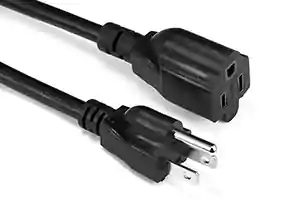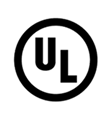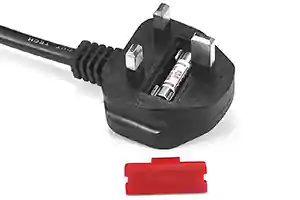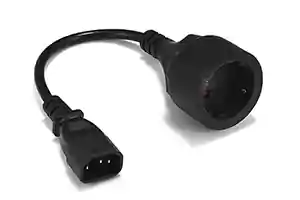Popularly known as the Europlug, the Type C plug is a 2 pin unearthed plug used throughout continental Europe, parts of the Middle East, and much of Africa, South America, Central Asia, and the former Soviet republics.
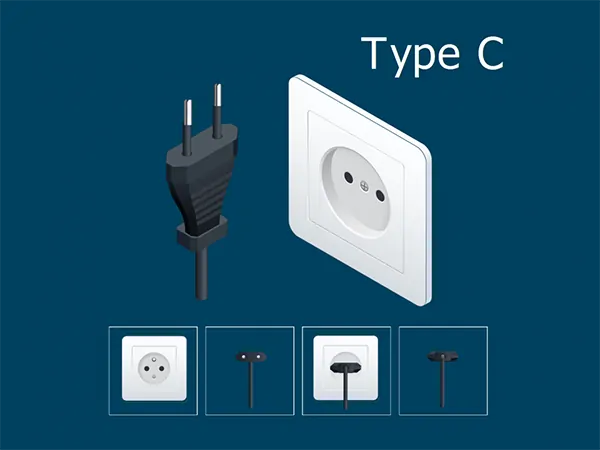
Table des matières
What Type of plug is a Type C plug?
Type C plug is the most widely used plug internationally. This two-wire plug is ungrounded, unpolarised, and has two round prongs. It is popularly known as the Europlug which is described in CEE 7/16. The electrical plug has two 4 broches rondes mm, mesure 19 mm de longueur sur les centres espacés 18.6 mm apart at the base and 17.5 mm apart at the tip.
The two pins have 10 manches longues isolées mm. They converge slightly, but they are relatively flexible, allowing the plug to mate with any socket that accepts 4.0 – 4.8 mm contacts ronds sur 17.5 – 19 mm centres. The plug is generally limited for class II applications requiring 2.5 amps or less.
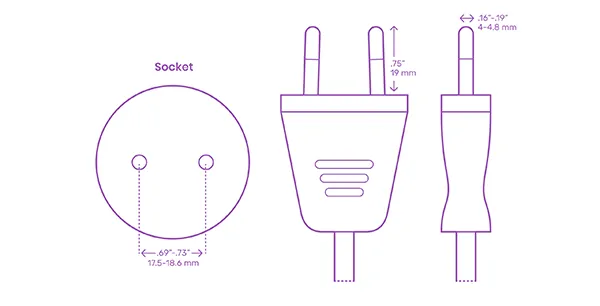
There is also a second, less frequently used version of the Type C plug (CEE 7/17), which is rated at either 10 Un ou 16 UNE. Its pins have the same length (19 Applications de câbles de queue de cochon de prise d'alimentation mâle DC) as the 2.5 amp version, but they are not insulated and have a slightly larger diameter (4.8 millimètre au lieu de 4 Applications de câbles de queue de cochon de prise d'alimentation mâle DC). Appliances that do not require earthing but are high energy-consuming are almost always fitted with this kind of plug (e.g. hairdryers, bathroom heaters, vacuum cleaners, etc.).
Please note that type N sockets, which are used in Brazil and South Africa, are incompatible with the 16 amp version of type C because of the shape of the plug. Type N sockets are recessed and hexagonally shaped and only accept hexagonally-shaped plugs.
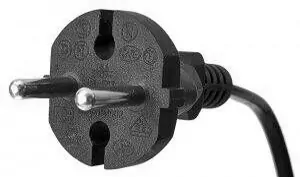
Type C plug features
La prise de type C est la CEE 7/16 (Prise européenne 2.5 A/250 V non mis à la terre). Une prise similaire avec des broches légèrement plus grandes est connue sous le nom de CEE 7/17. Les deux types sont déterrés et ont deux broches rondes qui convergent légèrement. Le CEE 7/16 est destiné aux appareils nécessitant 2.5 A ou moins. La 19 mm de séparation des broches et des broches’ 4 mm length allows safe insertion in most Type C, Tapez E, Type F, Tapez H, et certaines prises de type L.
The larger CEE 7/17 has a round plastic or rubber base that prevents it from being inserted into small sockets. The base has holes to accommodate the side contacts and socket earth pins.
What countries use Type C plug?
Type C plug is commonly used in all countries of Europe except in the United Kingdom, Irlande, Malte, and Cyprus. They are also used in various parts of the developing world.
Albanie
Algérie
Angola
Argentine
L'Autriche
Azores
Balearic Islands
Bengladesh
Belgique
Bolivia
Bosnia
Brésil
Bulgarie
Burkina Faso
Burundi
Cameroun
Canary Islands
Cape Verde
The central African Republic
Channel Islands
Chili
Comores
Congo
Croatie
Dem. Rep. of Congo (Zaire)
Cote d’Ivoire (Ivory Coast)
Chypre
Danemark
Djibouti
Egypte
Le sauveur
Guinée Équatoriale
Érythrée
Faeroe Islands
Finlande
Guyane Française
Gabon
Allemagne
Gibraltar
Grèce
Groenland
Guadeloupe
Guinée
Guinea-Bissau
Hongrie, Islande
Inde
Indonésie
L'Iran
Iraq
Isle of Man
Israël
Italie
Kazakhstan
Corée
Koweit
Laos
Lebanon
Lituanie
Luxembourg
Macédoine
Madagascar
Madeira
Mali
Martinique
Mauritania
Mauritius
Monaco
Monténégro
Maroc
Mozambique
Birmanie
Népal
Pays-Bas
Niger
Norvège
Oman
Pakistan
Paraguay
Peru
Philippines
Pologne
le Portugal
Roumanie
Russie
Rwanda
St. Vincent
Sénégal
Serbie
Slovénie,
Somalia
Espagne
Sudan
Surinam
Suède
Suisse
Syria
Thaïlande
Togo
Tunisie
Turquie
Uruguay
Viêt Nam
Zambia
Electricity Type C plug certificate
Les approbations et certifications des agences INMETRO et CSA sont disponibles sur la page des spécifications du produit, IEC Type C Plug.
Nous avons fait une introduction graphique très détaillée dans l'article marques de sécurité pour plus d'informations sur la certification de sécurité des fiches de cordon d'alimentation.
What about Type C sockets?
Although type C plugs are used in so many places worldwide, the opposite is true for type C sockets. This socket is the older and ungrounded variant of Type E, F, J, K, L, N, and O socket. De nos jours, most countries demand grounded sockets to be installed in new buildings.
Since type C sockets are unearthed, they have become illegal almost everywhere, and they are being replaced by type E, F, H, J, K, L, N, or O (depending on the country). To leave no doubt: only the sockets have become illegal, the plugs remain in use, bien sûr. La ‘normal’, 2.5 amp type C plug fits perfectly into a type E, F, H, J, K, L, N, or O socket.
Maintenant ça’à votre tour
De sorte que’s how I understand Type C plug and socket.
Maintenant, je veux te céder la parole: A travers mon article, do you understand Type C Plugs and Sockets (Prises électriques)?
Do you have a different point of view with the power plug type C? Ou toute autre question?
Faites-le moi savoir en laissant un commentaire rapide ci-dessous dès maintenant.
